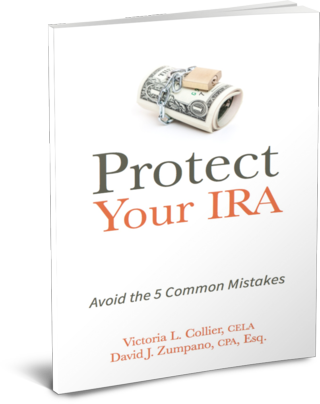Many clients I come across as an estate planning attorney have been married for 30 or more years. I recall once when a couple who had been married for 37 years came into my office to engage in estate planning. I encouraged them to plan for remarriage if either of them died. They both giggled and laughed and said, oh my gosh, how silly. We don't need that. We're very confident in each other that each of us will take care of our kids and not be influenced by a new relationship.
In a weird twist of fate, six months after completing their plan, the husband came back in with a blonde bombshell 20 years his junior at his side. He explained to me that, soon after executing the plan with us, his wife contracted cancer and died within three months. Now, three months after that, he had this newfound “friend,” and he was asking me to change his trust to make her a beneficiary and not his children. I reminded him of the planning he and his wife set out, and he was adamant to say, “Nope, we decided we could do whatever we wanted.” Unfortunately, his version of whatever he wanted and his wife’s were different for me than they were for him.
 Needless to say, I refused to do the work; he fired me and found another lawyer to make his modifications. The LWP™ Client Centered Software has extensive remarriage planning options – but it also has provisions to address if a husband and wife that we did estate planning for decide to divorce before they die. I've had this happen on a couple of occasions.
Needless to say, I refused to do the work; he fired me and found another lawyer to make his modifications. The LWP™ Client Centered Software has extensive remarriage planning options – but it also has provisions to address if a husband and wife that we did estate planning for decide to divorce before they die. I've had this happen on a couple of occasions.
The key question you must ask yourself in this situation is, what type of planning did the client do? If your client did traditional estate planning consisting of wills, healthcare proxies, powers of attorney or a revocable trust, then it becomes critical after a divorce to amend those plans to accommodate each spouse’s new goals separately. But, what if your married clients did an irrevocable asset protection trust as part of their planning?
In the Lawyers with Purpose Client Centered Software (LWP-CCS) system, the traditional trust we would use to protect against creditors, predators and to ensure the client is eligible for Medicaid and other needs-based benefits is an IPug®, which is an Irrevocable Pure Grantor Trust®. If you think about it, an IPug trust or other asset protection trust is set up to protect against creditors and predators and to ensure that the client is eligible for state-funded long-term care benefits should the need arise. But what about protecting from each other? A properly drawn IPug protection trust provides the terms for a divorce. The trust clearly identifies the beneficiaries of the irrevocable trust during the couple’s life and after their death. Interestingly, the LWP-CCS has a customized divorce provision in the trust that ensures that, if the grantors divorce, the trust bifurcates and all of the terms and provisions related to each spouse apply to them in the separate trusts. Further, the provision eliminates all references to spouse, and thereby creates the trust for the other beneficiaries as if the spouse were deceased. So, the question becomes, what does it mean when the trust bifurcates and thereafter is managed in accordance with all of the other trust term provisions? That's where the drafting of your IPug trust becomes critical.
In the LWP-CCS trust system, you are able to customize the contributions of each spouse and include them on separate and/or joint schedules. In addition, the question of whether you design the trust to separate a deceased spouse's assets for the benefit of the surviving spouse will be critical in determining what happens in the case of a divorce. By separating assets into two schedules, bifurcated trusts are created. Each spouse then manages his or her funds through the bifurcated trust. This ensures that, when a spouse passes a way, all assets of the individual deceased spouse will be allocated to the separate bifurcated trust, thereby sheltering said assets from the living spouses subsequent remarriage and divorce. The trust further includes protective provisions regarding divorce for the trust beneficiaries through the disability panel, specific bequests and other customizations.
So, as estate “planning” attorneys, we must not only be concerned about protecting the assets from our client's remarriage after the loss of their spouse, we can also ensure that proper divorce planning is accomplished at the same time. Hey, like Prego spaghetti sauce, it's in there. The LWP-CCS has you covered. Hopefully they'll never have to use it, but for those few times it happens, it's nice to know there'll be one less thing to worry about.
Many clients I come across as an estate planning attorney have been married for 30 or more years. I recall once when a couple who had been married for 37 years came into my office to engage in estate planning. I encouraged them to plan for remarriage if either of them died. They both giggled and laughed and said, oh my gosh, how silly. We don't need that. We're very confident in each other that each of us will take care of our kids and not be influenced by a new relationship.
In a weird twist of fate, six months after completing their plan, the husband came back in with a blonde bombshell 20 years his junior at his side. He explained to me that, soon after executing the plan with us, his wife contracted cancer and died within three months. Now, three months after that, he had this newfound “friend,” and he was asking me to change his trust to make her a beneficiary and not his children. I reminded him of the planning he and his wife set out, and he was adamant to say, “Nope, we decided we could do whatever we wanted.” Unfortunately, his version of whatever he wanted and his wife’s were different for me than they were for him.
Needless to say, I refused to do the work; he fired me and found another lawyer to make his modifications. The LWP™ Client Centered Software has extensive remarriage planning options – but it also has provisions to address if a husband and wife that we did estate planning for decide to divorce before they die. I've had this happen on a couple of occasions.
The key question you must ask yourself in this situation is, what type of planning did the client do? If your client did traditional estate planning consisting of wills, healthcare proxies, powers of attorney or a revocable trust, then it becomes critical after a divorce to amend those plans to accommodate each spouse’s new goals separately. But, what if your married clients did an irrevocable asset protection trust as part of their planning?
In the Lawyers with Purpose Client Centered Software (LWP-CCS) system, the traditional trust we would use to protect against creditors, predators and to ensure the client is eligible for Medicaid and other needs-based benefits is an IPug®, which is an Irrevocable Pure Grantor Trust®. If you think about it, an IPug trust or other asset protection trust is set up to protect against creditors and predators and to ensure that the client is eligible for state-funded long-term care benefits should the need arise. But what about protecting from each other? A properly drawn IPug protection trust provides the terms for a divorce. The trust clearly identifies the beneficiaries of the irrevocable trust during the couple’s life and after their death. Interestingly, the LWP-CCS has a customized divorce provision in the trust that ensures that, if the grantors divorce, the trust bifurcates and all of the terms and provisions related to each spouse apply to them in the separate trusts. Further, the provision eliminates all references to spouse, and thereby creates the trust for the other beneficiaries as if the spouse were deceased. So, the question becomes, what does it mean when the trust bifurcates and thereafter is managed in accordance with all of the other trust term provisions? That's where the drafting of your IPug trust becomes critical.
In the LWP-CCS trust system, you are able to customize the contributions of each spouse and include them on separate and/or joint schedules. In addition, the question of whether you design the trust to separate a deceased spouse's assets for the benefit of the surviving spouse will be critical in determining what happens in the case of a divorce. By separating assets into two schedules, bifurcated trusts are created. Each spouse then manages his or her funds through the bifurcated trust. This ensures that, when a spouse passes away, all assets of the individual deceased spouse will be allocated to the separate bifurcated trust, thereby sheltering said assets from the living spouses subsequent remarriage and divorce. the trust further includes protective provisions regarding divorce for the trust beneficiaries through the disability panel, specific bequests and other customizations.
So, as estate “planning” attorneys, we must not only be concerned about protecting the assets from our client's remarriage after the loss of their spouse, we can also ensure that proper divorce planning is accomplished at the same time. Hey, like Prego spaghetti sauce, it's in there. The LWP-CCS has you covered. Hopefully they'll never have to use it, but for those few times it happens, it's nice to know there'll be one less thing to worry about.
It’s time to check out what becoming a Lawyers With Purpose Member would look like for you and your practice. If you’re even at all curious about what we offer in the Lawyers With Purpose program and how becoming a member will forever change your practice, you owe it to yourself to spend a few minutes reading through this page: www.joinlwp.com. Make a change in your practice for 2016 and join us!
David J. Zumpano, Esq, CPA, Co-founder Lawyers With Purpose, Founder and Senior Partner of Estate Planning Law Center
 Becoming eligible for and applying for veterans benefits is complicated. The client must be instructed step-by-step through the process. The same is true for Medicaid applicants. From the time the client engages our services through the receipt of a benefits award, we are regularly communicating and giving instruction. I know we have stopped holding their hand when the client calls and says, “Why isn’t this going faster?” or “I’ve paid all this money and I don’t think we’ve gotten our money’s worth,” or “It just doesn’t feel worth this trouble,” or “I wish I had not even hired you.”
Becoming eligible for and applying for veterans benefits is complicated. The client must be instructed step-by-step through the process. The same is true for Medicaid applicants. From the time the client engages our services through the receipt of a benefits award, we are regularly communicating and giving instruction. I know we have stopped holding their hand when the client calls and says, “Why isn’t this going faster?” or “I’ve paid all this money and I don’t think we’ve gotten our money’s worth,” or “It just doesn’t feel worth this trouble,” or “I wish I had not even hired you.”









